X-Men Comics VS Movies (Part 6 - Days of Future Past)
Although the timelines are getting more complicated, we still have a job to do. We have to compare the comics to the movies. Well, we don't...but we're going to. Although Days of Future Past is one of the most epic movies in the franchise, and easily sports the biggest cast, most of them are returning characters who don't need to be recapped...with one exception.
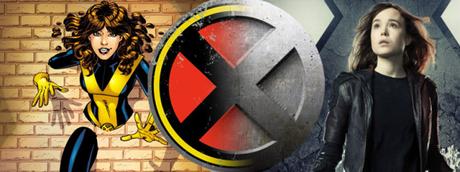
The Comic: (From a previous entry.) By the time of the Dark Phoenix Saga the main cast of the X-Men had grown out of their teenage years and were getting involved in more adult conflicts. To help bridge the gap between the readers and the characters the 13 year old Kitty Pryde was introduced. Having been identified as a mutant with the ability to 'phase' through solid objects, Kitty was recruited to Xavier's school and given the codename 'Sprite'. This was later changed to 'Ariel' before finally landing on 'Shadowcat'. Kitty quickly became the emotional heart of the team and would become intertwined into their drama, from having a crush on Colossus to receiving ninja training from Wolverine in Japan.
The Movie: Out of all the characters featured in Days of Future Past it's Kitty who confused X-Men fans the most. Shadowcat's ability is fairly straight forward: she can phase through solid objects. With enough concentration she can even walk on the air by phasing through individual molecules. What she can't do in the comics is send people through time. In this film Shadowcat and the resistance have survived attacks by the Sentinels by sending Bishop back through time to warn of their coming. Perhaps this is an extension of her powers and she's 'phasing' through time, but it's also implied that it only works on Bishop. It's genuinely confusing and completely unexplained. In the comic story of the same name it's Rachel Summers, daughter of Cyclops and Phoenix, who users her powerful telepathy to send Shadowcat back in time to her younger self to forewarn of the Sentinel takeover. Aside from that Shadowcat is largely underused in this film, so we don't learn about how much she matches her comic counterpart personality wise.
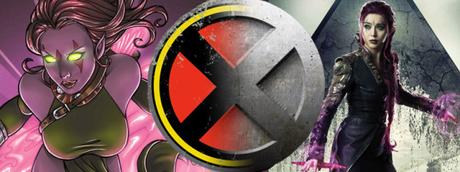
The Comic: Clarice Ferguson was to be a member of Xavier's fourth generation of X-Men, one of group of young new mutants he had identified and kept records on (Xavier is creepy like that). Unfortunately the Phalanx, a techno-organic hybrid, got access to Xavier's files and abducted the teenagers who would become Generation X. Clarice was killed during their escape attempt, but was later brought back to life and manipulated by Selene of the Hellfire Club to kill on her behalf. In time the X-Men, along with Dr. Strange, rescued Blink and she began training with the X-Men. Blink's powers revolve around teleportation, and she's able to teleport both herself and others. She can shift massive objects a long distance. Blink has learned to utilise this ability in an offensive manner by teleporting only portions of her enemies. Initially Clarice couldn't control her powers and anyone or thing caught in her portals would be shredded.
The Movie: Fan Bingbing is certainly recognisable as Blink even if she's physically quite different. She has her distinct purple hair and diamond shaped facial markings, but she lacks the lilac coloured skin, instead being very pale, and whilst she has green eyes they do have pupils. The elf-like pointed ears are also missing. Her teleportation powers are more in line with the 'Age of Apocalypse' alternative universe version of the character, where she had learned to focus her power into 'javelins' that could be thrown. In the comics they would teleport whatever they struck, whilst in the film they open a portal window anyone could travel through. This power is used to very creatively in the film. Like many characters present in the film we don't see enough of her to establish a personality.
Played by Booboo Stewart
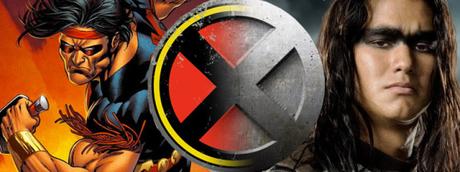
The Comic: Warpath's story begins with his brother, John Proudstar, who was recruited into the second generation of X-Men as Thunderbird. Tragically he was killed on their second mission. James Proudstar blamed Xavier for this and joined the Hellions, a rival mutant school headed by Emma Frost, where he took on his brother's codename of Thunderbird. After concocting an opportunity to kill Xavier, James has a change of heart and joins the New Mutants, who shortly thereafter formed into X-Force. Since then Thunderbird, later known as Warpath, has been a member of various X-teams where he's a key figure in combat situations. His enhanced strength, speed, endurance and agility to the extend that he can clap his hands together with such force he could knock down a Sentinel and run at speeds up to 150km/h. His enhanced physicality includes his sense, allowing him to see great distances and detect sounds and smells well outside of the human range.
The Movie: He does looks the part, but cinematic Warpath doesn't manage the sheer size of his comic original. Not that Booboo Stewart is frail - he gained more than 20 kilograms of muscle for the role - but Warpath usually stands at about 220cm tall. His level of strength is reduced for the film as well, possibly to prevent him from looking cartoonish. Apart from these minor quibbles he's certainly on point and plays a cool role in the films best action sequences.

The Comics: As one of the first recruits into the New Mutants, Sunspot quickly marked himself as an angry young man. His successful and ambitious father has always pushed Roberto de Costa to excel in all fields, giving him a strong but sometimes stubborn sense of competitiveness. This drive was only enhanced by the death of his girlfriend during an altercation with the Hellfire Club, leading to him joining the New Mutants. Sunspot was a central figure in this generation of Mutants and would stay with them during their stint as X-Force. From there he would take control of the Hellfire Club and eventually join The Avengers. Sunspot is described as a 'living solar battery' as his power allows him to absorb and store solar energy, which he could convert into strength. Whilst immensely strong in his solar form, de Costa would often need reminding from his teammates that he wasn't indestructible or that his power was limited by the available sunlight due to his drive to be an unbeatable hero. Over time his powers would develop further, allowing him to harness flight and fire blasts of concussive energy.
The Movie: Sunspot is the least utilised of the characters in the movie, not having any contributing dialogue in the story. Rather he only seems to exist to provide the Sentinels with a counter to Iceman. In spite of this the representation of his powers are spot on, with his powered form looking the business. Like Cyclops, his concussive blasts seem to have developed heat in the cinematic universe.
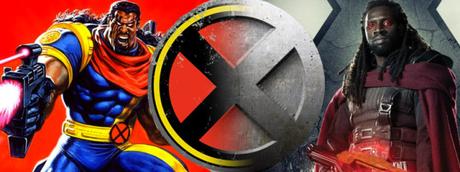
The Comic: During an altercation with time travelling mutant Fitzroy, the X-Men were shocked when a team representing what they called Xavier's Security Enforcers appeared through a portal and joined the fray. They were led by Bishop, who ultimately became the only survivor from this future, who had travelled through time to apprehend Fitzroy. Bishop grew up worshiping the legends of the X-Men, and initially does not believe that he's encountered the real deal, but eventually comes to accept his reality and joins the team. Often feeling as though he's a man out of time, Bishop's harsh military background often put him at odds with the team's ideologies. In addition to his future technology and weaponry Bishop has the power to absorb and redirect energy.
The Movie: This is a constant annoyance for me, and while the cinematic character isn't necessarily the same as in the comics, it bugs me that Bishop was originally written and drawn as an Indigenous Australian. This is a race who have unique physical features and are easily distinguished from African Americans...yet the majority of artists seem to just draw him as African American. Ok, never mind all that...he's a pretty solid representation. He's the tough as nails leader of a faction of survivors so it's similar to his backstory. Being the subject of Shadowcat's time shifting powers alludes to his time travelling origin. His powers are tweaked - he still absorbs energy, but he seems to redirect it into his gun. At least he got his dreadlocks.
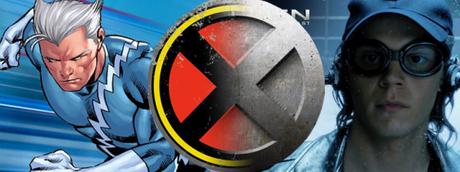
The Comic: Quicksilver entered into the world of the X-Men as a member of the Brotherhood of Evil Mutants, where he as his sister Scarlet Witch we reluctant lackeys of Magneto. Although they didn't know it at the time Magneto is their true father (this actually goes back and forth). Eventually they get free of this criminal life and join The Avengers. Quicksilver stayed with these heroes for some time, during which he married Crystal of the Inhumans, before joining the government backed group X-Factor. Although he's arrogant, often challenges the leadership of his teams and has a complex relationship with Magneto, Quicksilver is determined to remain a force for good.
The Movie: There's a funny story behind the inclusion of Quicksilver in this film. Originally Xavier tapped his half-brother Juggernaut to help spring Magneto from jail by dropping him out off their jet, and they'd even cast an actor in the role. After seeing high-speed camera tests and deciding a new character was a better idea (and nothing to do with Quicksilver being announced as a character in The Avengers: Age of Ultron). This was a pretty good idea, as Quicksilver's high speed sprint around the kitchen is the high point of the film. It's a great blending of practical and computer effects. Quicksilver's speed powers are certainly accurate, as is his arrogant attitude. He's been aged down to his teenage years, and switches out the spandex one-piece for silver leather and rock band shirts.
Played by Peter Dinklage
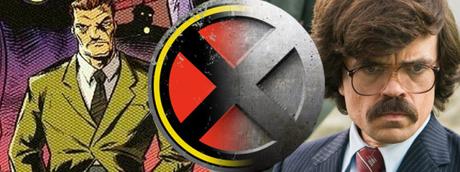
The Comic: Bolivar Trask is an early X-Men villain, appearing within the first two years of publication. Trask is an anthropologist who has come to the conclusion that mutants who surpass humans as the dominant species unless humankind fought against them. To this end he created the Sentinels, giant robots who could track and kill mutants. They were revealed during a televised debate with Xavier where, ironically, the Sentinels turned against Trask and determining they were superior to humans. They took him captive and forced him to build more Sentinels. When he learns that the X-Men fought to protect humanity from such threats, Trask sacrificed himself to protect them from his own creation.
The Movie: Trask was never an especially complex character, but his background and motivations have been shifted around in the movie. He appears to more of a political figure and business man than a scientist. He has no specific hatred of mutants, rather he callously seeks to capture and experiment on mutants to harness their powers for weapons research. The film version is the only version of the character who is a dwarf. Trask is also lacking ironically mutant children, and he's taken the place of Senator Kelly as the target for assassination leading to the 'Days of Future Past' story.
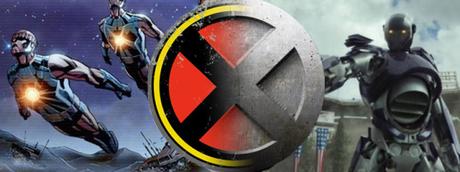
The Comics: As mentioned above The Sentinels were the creation of Bolivar Trask with the goal of protecting humans from mutants. Despite his change of heart, Trask's creation became his legacy and The Sentinel's return again and yet again to battle with the X-Men. The creation of Master Mold, a giant Sentinel who would create new Sentinels, acted as a central intelligence hub when they weren't being build and controlled by a specific human or agency. The Sentinels have changed size and design over the years, but a few elements are consistent including the distinct robotic face, a purple colour scheme and a range of weapons along with the ability to fly.
The Movies: At a glance the cinematic Sentinels don't look the business, but the devil is in the details. They share the same facial features under their clear face plate and have the purple colour scheme. Trask has created them to sell as weapons rather than kill the mutants for his own benefit. They're not as large as Sentinel's are usually depicted, but they are close in size to the original design. The future Sentinel's with the shape-shifting ability though...that's a new thing.
Now, time for an Apocalypse!

